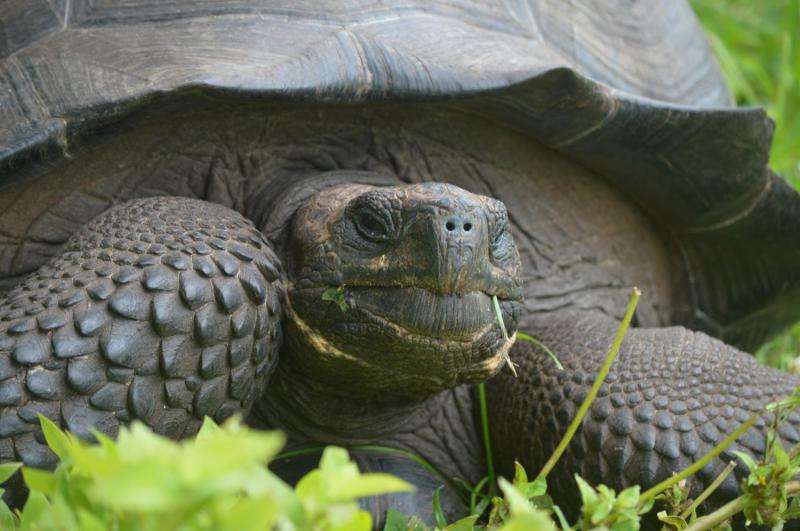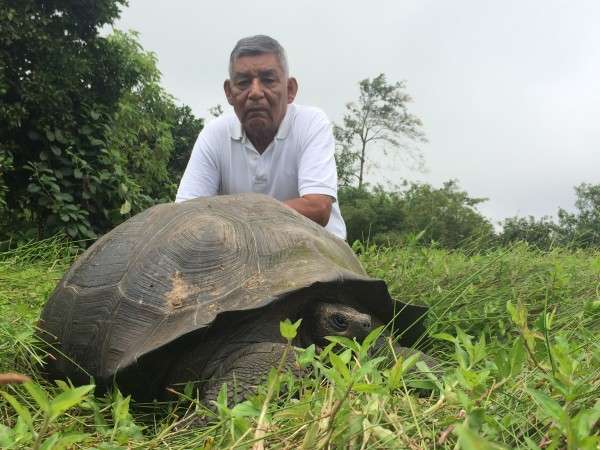New Giant Tortoise Species Found in Galapagos. Credit: Washington Tapia
A team of Ecuadoran and international scientists said Wednesday they have identified a new giant tortoise species on the Galapagos Islands.
There are only a few hundred members of the new species, Ecuador's environment ministry said in a statement.
Experts had long believed that the two giant tortoise populations on the Santa Cruz island were of the same species, but genetic tests have shown that those living on the eastern side of the island are different, the statement read.
The researchers, led by Gisella Caccone from Yale University, baptized the new species "Chelonoidis donfaustoi," in honor of Fausto Llerena, the caretaker of Lonesome George, a male Pinta Island tortoise and the last known survivor of his species.
George died in June 2012.
"We estimate that there are 250 or 300 creatures of this species," Ecuadoran scientist Washington Tapia, who participated in the research, told AFP.
Research began in 2002 when two scientists thought that "due to the formation of the shell, these tortoises should belong to a different species."
Then, Tapia said, scientists analyzed genetic samples taken from the animals.
"In 2005 the preliminary results already suggested that we were dealing with a different species," Tapia said.
The shell is indeed different from other tortoises, but "the main difference is at the genetic level," he said.
The head of the Galapagos National Park, Alejandra Ordonez, said that research on the new species continues "to determine their exact distribution on the island, their nesting areas, and potential threats."
Ranger Fausto Llerena Sánchez poses with a tortoise representing the species that was named in his honor. Credit: Washington Tapia
With this find, experts now believe that 15 species of tortoise lived on the islands, including four that are extinct.
The Galapagos archipelago, located 1,000 kilometers (620 miles) west of Ecuador, is a fragile ecosystem that harbors the largest number of different animal species on the planet.
In 1979 the Natural Reserve became UNESCO's first World Heritage Site.
© 2015 AFP

























